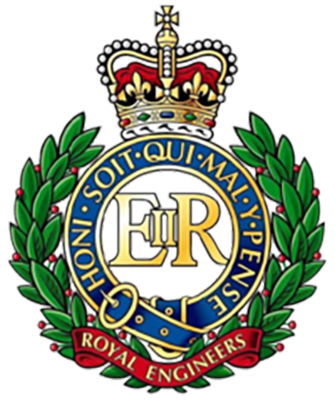Increasing efficiency and responsiveness with GIS
The Customer
One role of the Royal Engineers (RE) is to assist land based forces achieve their mission objectives, by maximising their mobility, survivability and sustainability using a wide range of specialist support services such as bridge building, mine clearing and demolition.
Improves situational awareness, contributing to better decision making
Enables tasks and resources to be located with precision, saving time
Promotes greater collaboration and sharing of information
The Challenge
Historically, the RE relied on manual, labour-intensive methods (broadly unchanged since the Second World War) that can be slow, resource intensive and prone to errors.
For example, the surveying and siting of a temporary bridge relied on the skills and experience of the RE using measuring equipment and whatever paper-based mapping was available. However, if the surveying and construction teams did not share the same mapping and positional awareness, the bridge could be constructed in the wrong location or to the wrong specification for the conditions.
The RE sought a new approach to planning and tasking that would achieve greater efficiency and increase its capability to respond effectively to operational demands.
The Solution
MAKEFAST is one of a number of BISAs (Battlefield Information System Applications) designed to operate through the developing BOWMAN communications infrastructure, and uses Esri’s Geographic Information Systems (GIS) technology for the mapping component. MAKEFAST has been developed to provide software tools that replicate existing RE processes: a comprehensive engineering planning and control package for combat engineers, supporting mission-critical tasks such as gap crossing, service provision, minefield management and demolition. It assists with planning, designing, resourcing and construction management and will be integrated and interoperable with other information systems within the land component of any operation.
The GIS component enables engineers to locate tasks and resources with precision, aiding deployment. Detailed overlays can be quickly drawn and shared between HQ and operational staff (in raster and vector format), improving situational awareness and informing decision making from a single, shared view of the task.
A detailed asset inventory is an important new capability: each asset has its own icon in MAKEFAST’s sketching tools, and these can be dragged and dropped onto maps, making it quick and intuitive to create scale drawings and geo-referenced overlays. A gap crossing tool is another feature: it is for accurately calculating the correct span, loadings and therefore equipment requirements.
Benefits
The MAKEFAST BISA has been received very positively in trials. For those responsible for tasking, it speeds up the briefing process while ensuring a clear and accurate picture is provided. For those responsible for deployment, it means greater accuracy in the siting of the right assets for the task, with the potential to save valuable time. Key benefits so far include:
Increased business process efficiency
The mapping component complements the task planning and resource management functions within MAKEFAST by providing a common geographic reference at reconnaissance, tasking, and construction stages. The installed asset can also be more efficiently georeferenced on completion, allowing its position to be more quickly and accurately communicated to end users.
Greatly reduced task time
The ability to clearly visualise a task and more easily share this information via BOWMAN, coupled with MAKEFAST’s improved design and resource ordering capability is expected to significantly reduce task time, in some cases by half. This will have a major benefit on agility and resource availability, allowing the Royal Engineers to better keep pace with operational tempo.
More effective information sharing and communication
In line with other BISAs planned to utilise the BOWMAN infrastructure, MAKEFAST is fulfilling its objective of promoting greater collaboration, sharing of common data and processes, and reducing information silos, thus enhancing overall operational efficiency and effectiveness.



